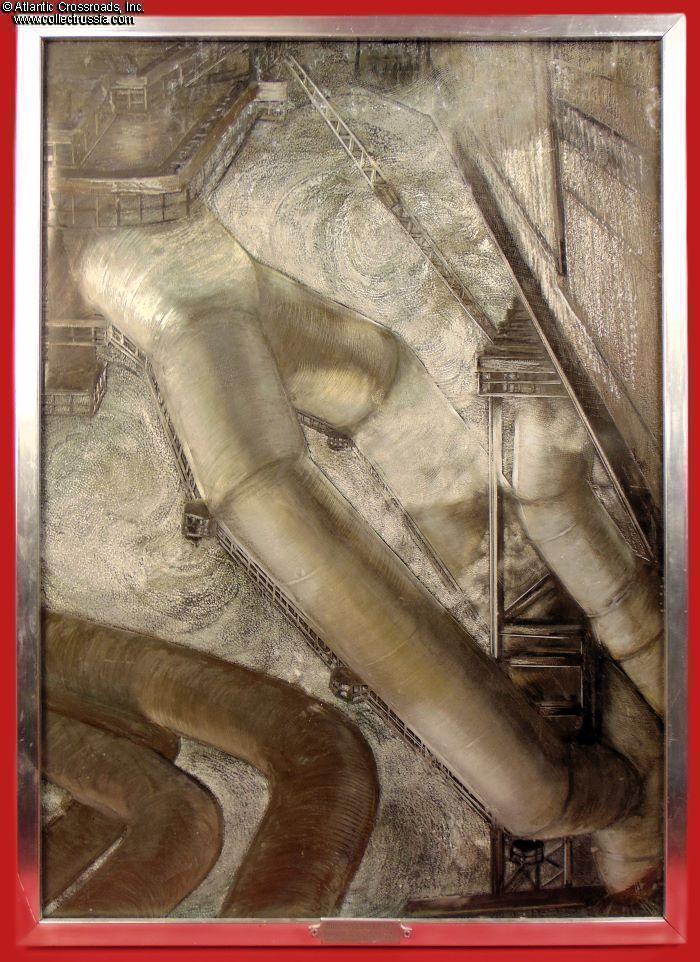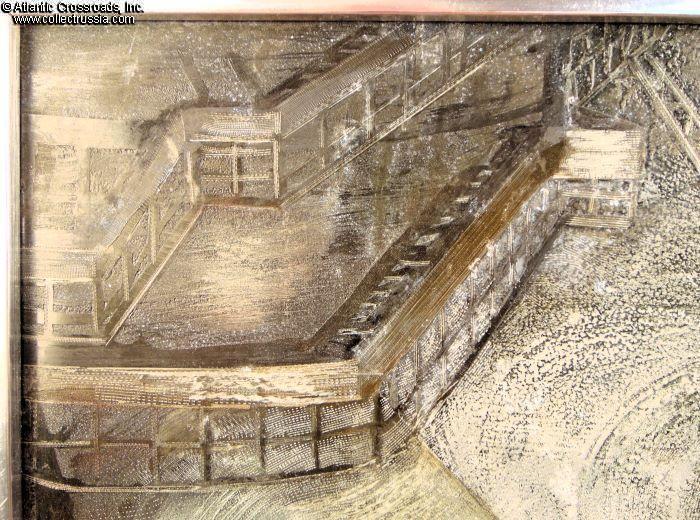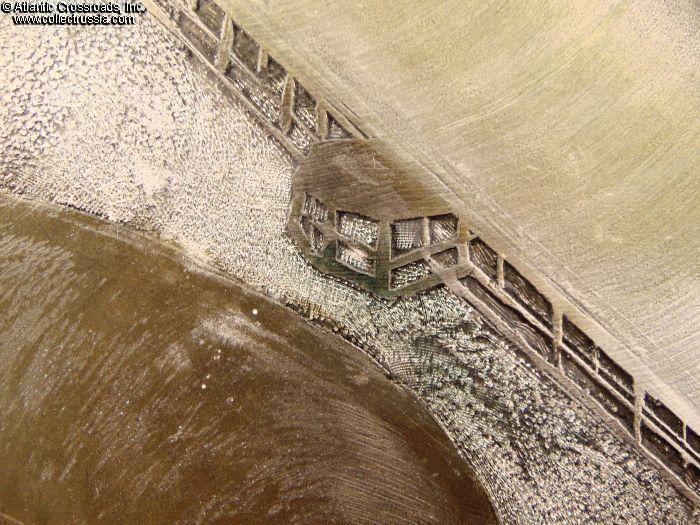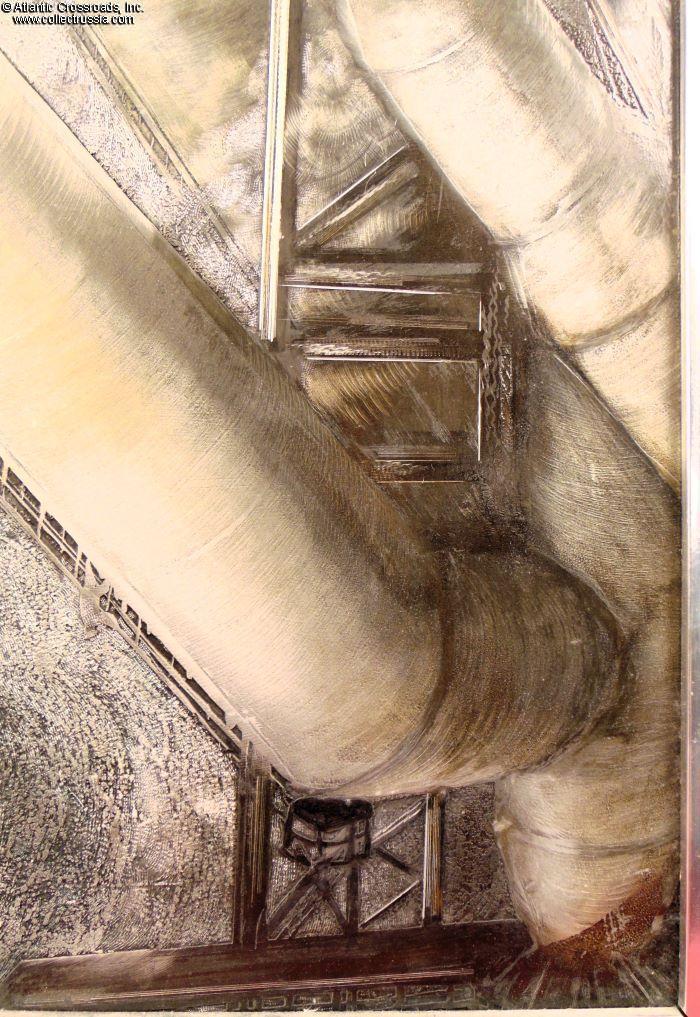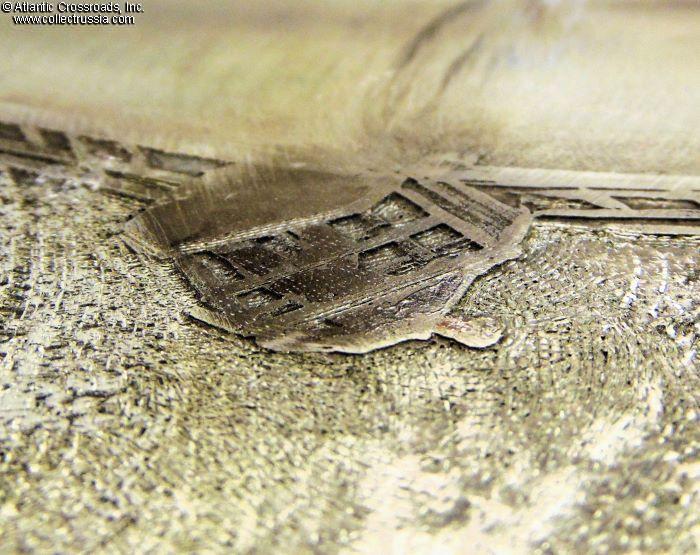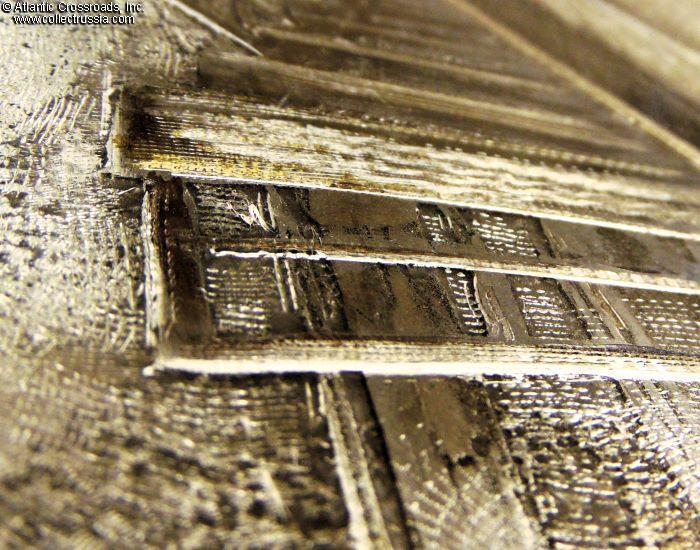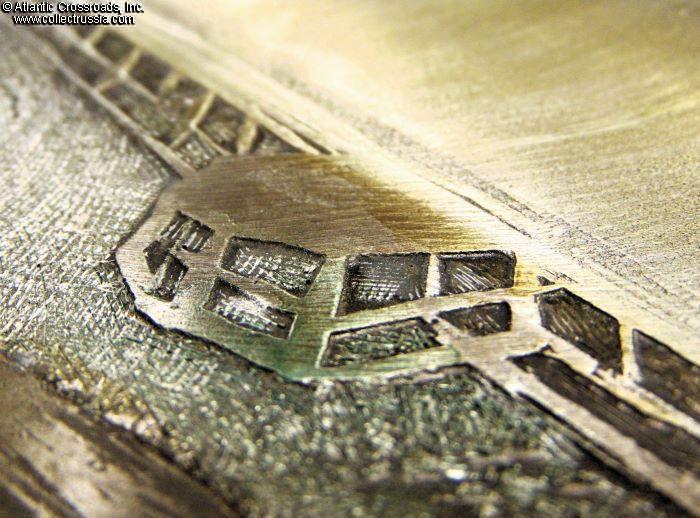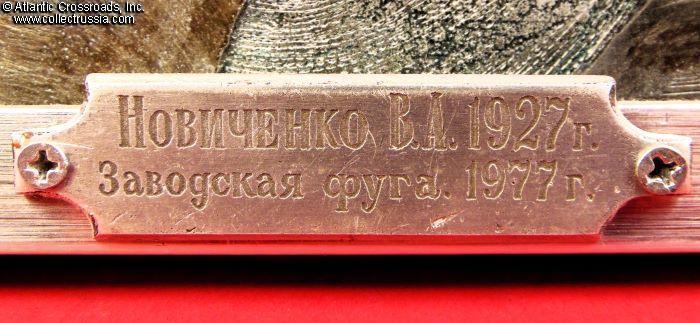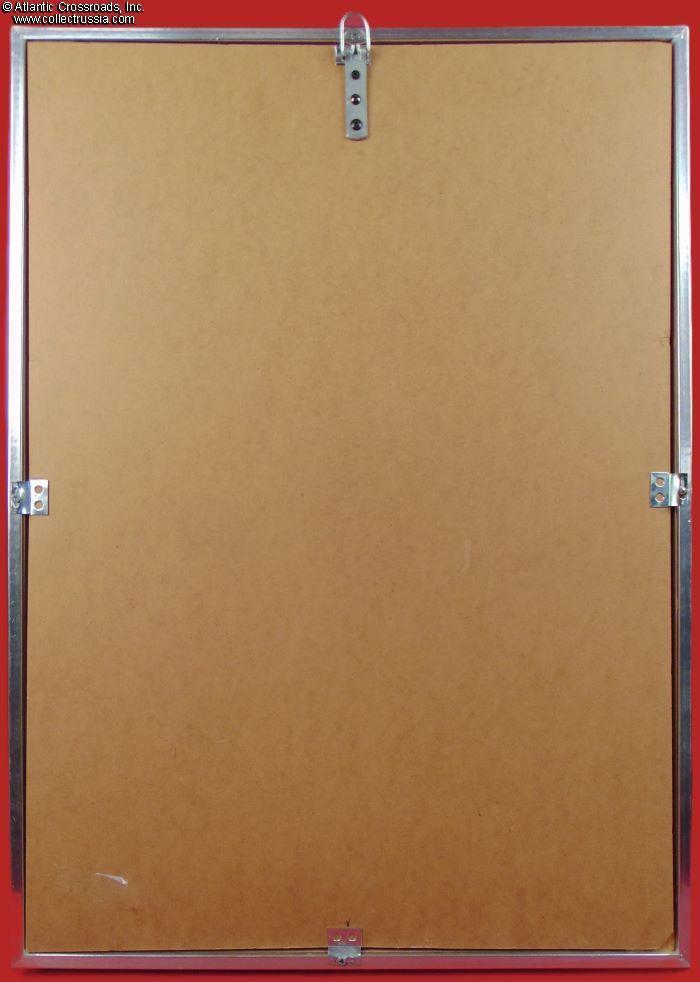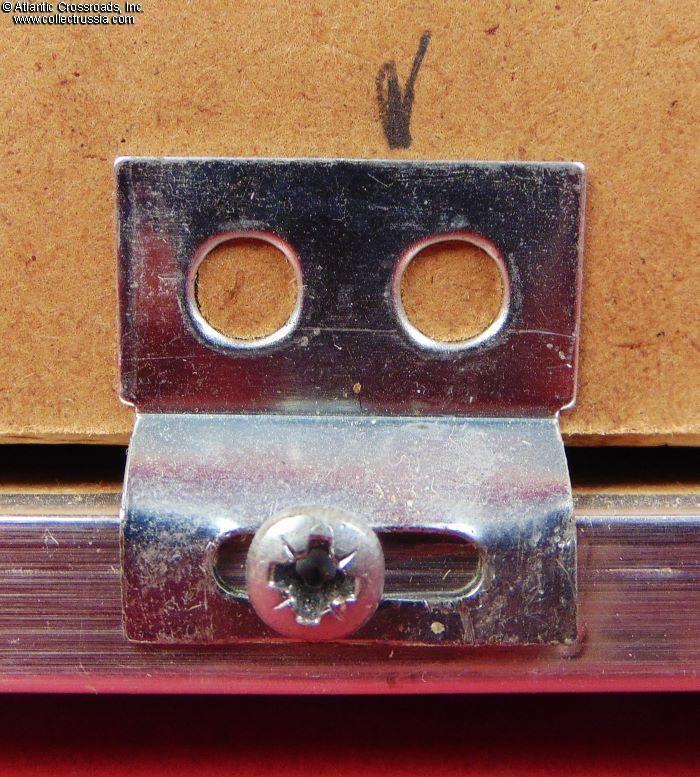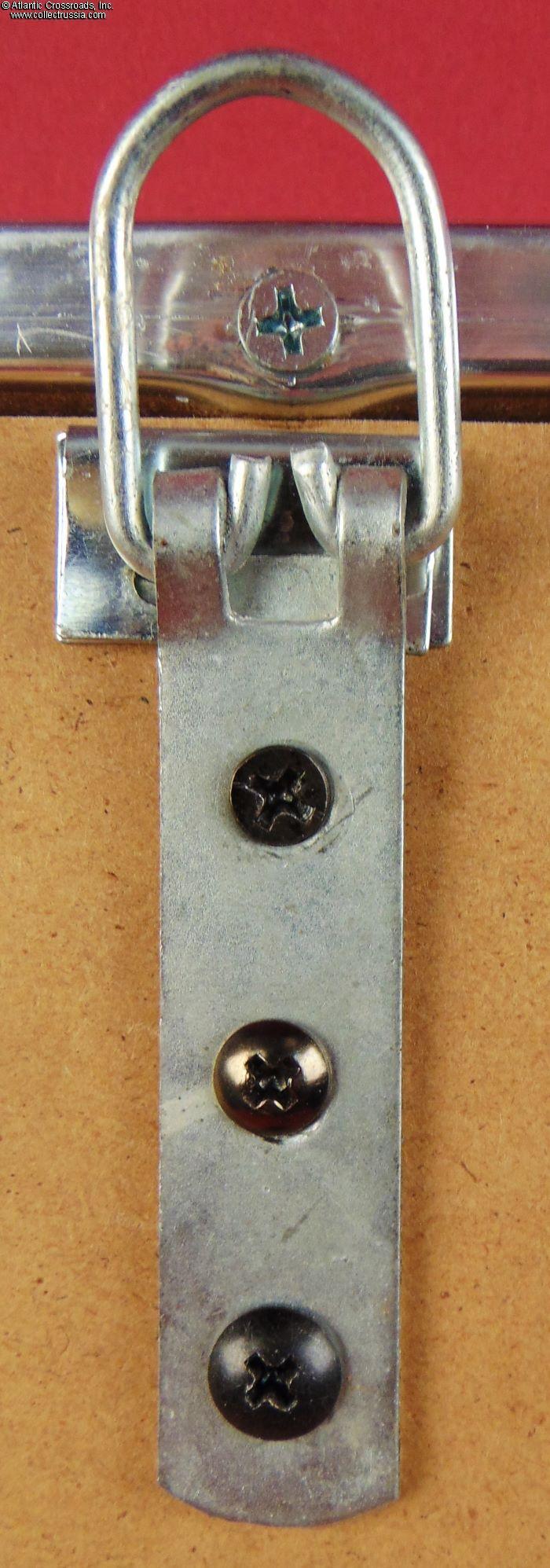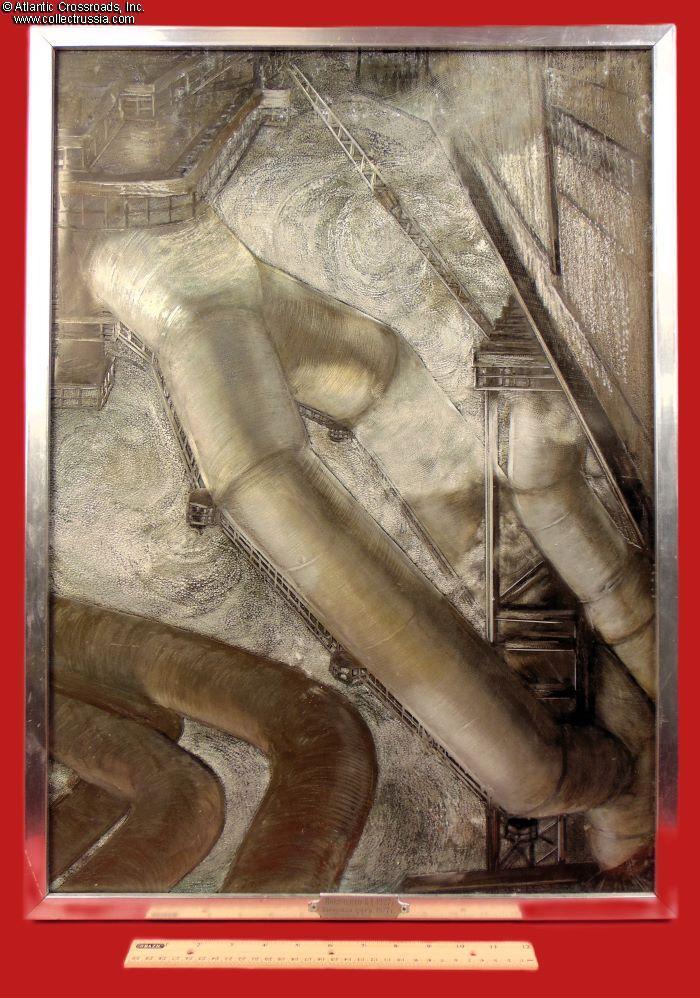Factory Fugue, Original Artwork Hand Engraved on Zinc, by Viktor Novichenko (Виктор Новиченко), Artist Signed, 1977.
Large Format measuring 21" x 29" with the frame; the visible artwork size is 19 ¼" x 27". Weighs 10 lbs. Comes with the original polished aluminum ½" deep frame. What the viewer sees is Novichenko's experience and impression of his main objet-d'art, Uralkhimmash, the giant chemical and machine-building conglomerate in the south of the Ural Mountains. The polyphony of its countless interwoven elements, the huge pipes, all solidified in one enormous and complex piece of organ music, gigantic compared to the humans who built it. Hence the title which sounds perfectly to the point in Russian. In English, Fugue in I-Major sounds more fitting, where "I" would stand for "Industry".
In excellent, outstanding condition. Very few small spots of oxidation blend in with the large and very varied texture of the piece. We did not see any damage to the surface of the zinc sheet. The frame is in perfect condition, both visually and structurally. The fiberboard backing is clean and held fast by pieces of aluminum, screwed in tight on four sides. The hanging hook is solid and made sturdy enough to hold the 10-lbs weight of the painting. Yes, it feels like a painting much more than a lithograph board.
This is one of the most innovative works by Novichenko, done in a technique he accidentally invented in the early 1970s while preparing his lithographic boards for an exhibition. While correcting the boards with a new set of burins, he was surprised to notice that the board was "coming alive", acquiring a new dimension of volume and expressivity. The boards could no longer be used for printing lithographs but were born as independent original works of art in an entirely new technique. Novichenko came up with the term ПОЛИШТРИХОГРАФИЯ (pronounced as POLISHTRIKHOGRAFIYA) which can be somewhat loosely translated as "poly-stroke graphics".
Valentin Novichenko (Валентин Алексеевич Новиченко, 1927-2010) is a well-known master of graphic arts from the Urals. He was born into a working-class family. His childhood impressions of industry and the construction of the Orsk Metallurgical Kombinat (group of factories) deeply affected his art.
He participated in the Patriotic War and then graduated from the Sverdlovsk School of Arts, which he attended from 1956 to 1961. In 1966 he became a member of the Trade Union of Artists of the USSR and a permanent participant of all-Union exhibitions. From 1953 to 1963 he worked as a decorator at the Uralkhimmash and Uralmash, both of which were gigantic powerhouses of Soviet industry that played an extremely important role in the development of the industrial might of the Soviet Union as well as its defense during the Great Patriotic War. They also played a major role in the development of the city of Yekaterinburg (then Sverdlovsk) and the entire Urals Region.
After the death of the artist in 2010, a number of his exhibitions opened in his native Urals and in Moscow, and well-known collectors are now trying to acquire his works. As is evident from his correspondence with colleagues that is now kept in a private collection, Novichenko had a difficult personality. He never tried to sell his works to collectors or earn favors from the bureaucrats managing arts; he also refused to sell his paintings to the managing committees of exhibitions on their terms. He was a tireless innovator, always in search of new materials and techniques, and this consumed his entire life. His lithographs on metal or so-called "poly-etching graphics" that employed various techniques and metal cutting instruments invented by him, make his art truly unique and of enduring value.
Please note that the 1-ft. ruler in our last photo is for size reference.
Note: due to the size and weight of the item, shipping and handling will be higher than our default charges, based on the destination. Please feel free to inquire before placing the order.
Item# 42893
$2,700.00 Add to cart
